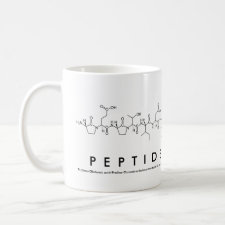
Authors: Brown ME, Puleo DA
Article Title: Protein binding to peptide-imprinted porous silica scaffolds.
Publication date: 2008
Journal: Chemical Engineering Journal
Volume: 137
Issue: (1)
Page numbers: 97-101.
DOI: 10.1016/j.cej.2007.09.002
Alternative URL: http://www.pubmedcentral.nih.gov/articlerender.fcgi?artid=2390877&tool=pmcentrez
Abstract: Of the many types of biomolecules used for molecular imprinting applications, proteins are some of the most useful, yet challenging, templates to work with. One method, termed the `epitope approach', involves imprinting a short peptide fragment of the protein into the polymer to promote specific adsorption of the entire protein, similar to the way an antigen binds to an antibody via the epitope. Whole lysozyme or the 16-residue lysozyme C peptide was imprinted into porous silica scaffolds using sol-gel processing. After removing template, scaffolds were exposed to lysozyme and/or RNase A, which was used as a competitor molecule of comparable size. When comparing protein- to peptide-imprinted scaffolds, similar amounts of lysozyme and RNase were bound from single protein solutions. However, while whole lysozyme-imprinted scaffolds showed about 4:1 preferential binding of lysozyme to RNase, peptide-imprinted scaffolds failed to show statistical significance, even though a slight preferential binding trend was present. These initial studies suggest there is potential for using peptide-imprinting to create specific protein-binding sites on porous inorganic surfaces, although further development of the materials is needed
Template and target information: protein, lysozyme, epitope, peptide, lysozyme C peptide
Author keywords: molecular imprinting, porous silica, Protein binding



Join the Society for Molecular Imprinting

New items RSS feed
Sign-up for e-mail updates:
Choose between receiving an occasional newsletter or more frequent e-mail alerts.
Click here to go to the sign-up page.
Is your name elemental or peptidic? Enter your name and find out by clicking either of the buttons below!
Other products you may like:
 MIPdatabase
MIPdatabase









